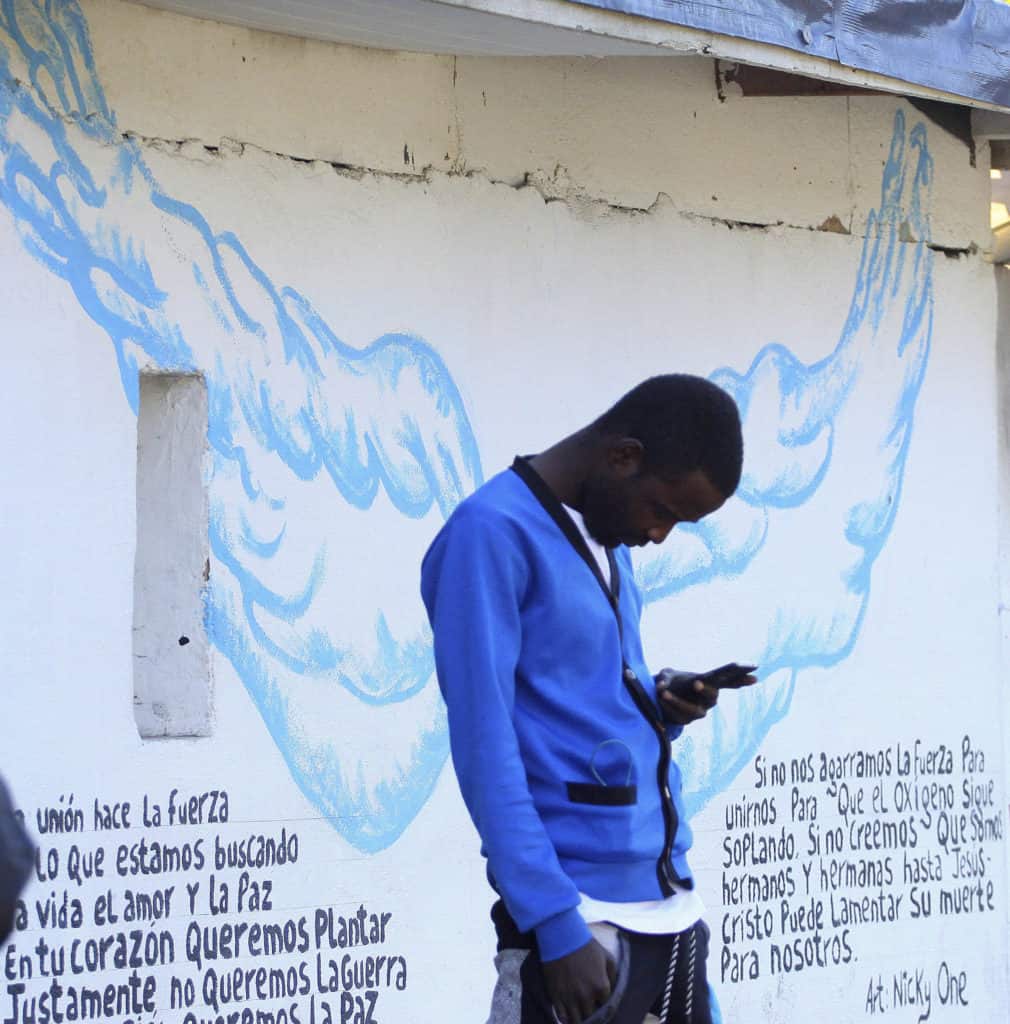Haitians Get Word of Trump Crackdown, Slow Flow to Border by 97%
Stephen Dinan, Washington Times, April 16, 2017

January 16, 2017 – Haitian migrant in a refugee shelter in Tijuana, Mexico. (Credit Image: © Alejandro Zepeda/EFE via ZUMA Press)
Sometime around November, word began to trickle back down the spine of Latin America: The U.S. was getting stricter about letting in Haitians at the border.
Not only had the Obama administration begun deporting Haitians after a six-year humanitarian pause, but President Trump also had just been elected, presaging an even tougher policy.
Many of those en route, such as the hundreds staged at migrant camps in Costa Rica and Nicaragua, figured they had gone that far and had little to lose by trying to finish the journey north.
But for the tens of thousands of Haitians in Brazil, Chile and elsewhere in South America who had been planning to journey north, the news was devastating. In a matter of weeks, the northward stream of people dried up.
It is one of the biggest among a plethora of success stories from the southwestern border, where illegal immigration appears to have nearly dried up in the two months since Mr. Trump took office.
Six months ago, U.S. Customs and Border Protection officers manning the ports of entry were encountering more than 100 Haitians a day. By March, only weeks into Mr. Trump’s tenure, that had dropped to just 100 for the entire month — down a stunning 97 percent.
Rep. Duncan Hunter, a California Republican who was one of the first to expose the surge of Haitians last year and has tracked the issue since, said all it took was a commitment of enforcement to stem the flow.
“The fact that these numbers are not just down, but so significantly reduced, is a direct credit to the Trump administration,” said Joe Kasper, Mr. Hunter’s chief of staff. “It shows what a message of enforcement first signals to the rest of the world and the extent to which the Obama administration’s policies were a problem.”
{snip}
The changes go well beyond Haitians.
The number of “inadmissible” migrants showing up at U.S. ports of entry and demanding to be let in has dropped from more than 20,000 in October to about 4,400 in March, a cut of nearly 80 percent. And the number of illegal immigrants nabbed while trying to sneak into the U.S. between the ports is down from more than 46,000 in October to a little more than 12,000 last month.
{snip}
Now, with the U.S. refusing entry, thousands of Haitians have ended up stuck in northern Mexico, Reuters reported last month.
The Haitians said they were hoping for legal status from Mexico, but Mexican officials told the news service that there were no immediate plans for a new round of legalization.
{snip}















